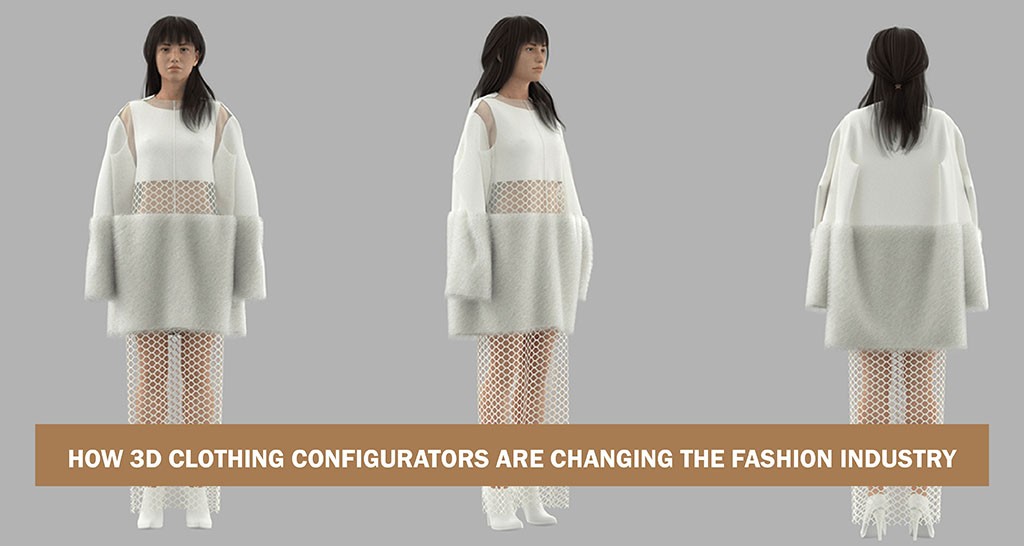Ever wished you could tweak a jacket’s sleeve length or pick a unique color for your new dress before buying it? Well, with the rise of 3D clothing configurators, these customizations are now possible.
In fact, it has become the norm in shopping. This breakthrough technology is changing the way we think about and interact with our wardrobe choices.
Certainly, now, you can watch your clothing come to life on screen, tailored to your preferences, before making a purchase. This is redefining shopping with the mix of your personal style.
Herein, we will show you how these innovations are reshaping the fashion landscape, making every shopping experience as unique as you are.
What is a 3D Clothing Configurator?
A 3D clothing configurator is an interactive tool that allows you to create your custom garment virtually. From selecting the fabric to choosing the design and even adjusting the fit, these configurators provide a hands-on approach to fashion. The tool uses 3D graphics to give you a realistic preview of how your clothes will look.
Why Are They Becoming Popular?
Personalization: Everyone wants something unique, and these configurators put the power of design in your hands.
Convenience: You can design and order from the comfort of your home.
Accuracy in Fit: Custom measurements mean fewer returns due to poor fits.
These benefits are part of why product configurator software is becoming a staple in the fashion industry. It enhances customer satisfaction and streamlines the production process.
Transforming the Retail Experience
The advantages don’t stop there. 3D clothing configurators stand to disrupt retail in some profound ways.
Shaping the Future of Retail with 3D Configurators
In the digital age, fashion retailers are embracing innovative tools to stay competitive and meet consumer demands for customization and speed. One such innovation is the product configurator software, which allows businesses to offer personalized shopping experiences that were previously unimaginable.
Implementing these 3D configurators can reduce inventory waste, allow quicker response to market trends, and provide a visually engaging way for customers to see their customized products in real-time.
Such clothing configurators exemplify how integrating them can propel a business forward, making it easier to attract and retain customers who value a tailored shopping journey.
Enhanced Customer Engagement
The use of 3D configurators significantly boosts customer interaction with the brand. When shoppers help create their own personalized product, they feel more connected to it.
This boosts their satisfaction and also leads to higher conversion rates and increased brand loyalty. For businesses, this means a direct path to growth by aligning with customer desires for a more personalized and interactive shopping experience.
Faster Product Cycles
Traditionally, launching a new fashion line meant undergoing tedious photoshoots and video productions. With 3D configurators, brands can rapidly create digital clothing samples to test new styles and gauge customer interest.
This accelerates the feedback loop, enabling quicker iterations and adjustments based on real-time consumer data, thus speeding up the time-to-market for new designs.
Interactive Marketing
Forget static lookbooks. Brands can offer immersive virtual experiences right on their websites to market collections and inspire shoppers. Think virtual runway shows, mixing and matching outfits, and more.
This approach not only enhances customer engagement but also allows for interactive storytelling where shoppers can create their own narratives, deepening their connection to the brand.
On-Demand Manufacturing
By leveraging customer body data and interest signals from configurators, brands can produce best-selling items in optimal quantities. This “made-to-order” model reduces overproduction waste.
It also caters to consumer demand more efficiently, ensuring that production is closely aligned with actual market needs, which can significantly cut down on inventory costs and boost sustainability efforts.
The Road Ahead
As compelling as 3D clothing configurators are, there are still some road bumps to overcome.
Computing Power: Rendering photorealistic 3D requires serious processing muscle, especially for larger retailers with huge product catalogs.
Data Privacy: Customers may have reservations about sharing body data, so clear privacy policies are a must.
Adoption Barriers: As with any new technology, you need to drive awareness and demonstrate the value proposition to get widespread buy-in.
However, many experts see these challenges as temporary growing pains. The potential benefits for retailers and shoppers alike are simply too attractive to ignore.
In Conclusion
3D clothing configurators are a practical solution to many of the fashion industry’s longstanding issues. When you integrate product configurator software into your business, you can offer a unique shopping experience. Moreover, it will help you cater to the modern consumer’s desire for personalization and sustainability. It is actually changing how people buy clothes and how the fashion industry is building relationships with customers.







